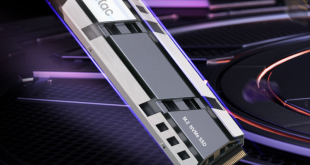Sapphire are using the latest version of their QBIOS configuration. We used Patriot 2,133mhz Viper memory and the system defaulted to 1,600mhz, posting first time.
We will look at the performance tab in a little more detail shortly, but this is where all the main system tuning is handled. We like the Sapphire BIOS layout, as the frequencies, voltages and temperatures are always visible along the bottom of the display, regardless of the page you are currently on. Very useful, especially for monitoring APU temperatures.
The Advanced panel offers a dedicated hardware monitor section, which expands on the detail shown along the bottom of the BIOS. There are also options to tune various sections of the board via this panel.
The Chipset panel gives access to the North Bridge.
The Boot Menu offers adjustments to boot drive priority and network booting. It works painlessly.
The final two panels offer control over security settings, restoring to default (or user default) settings and FLASH utilities. You can also restore a corrupted BIOS from the other BIOS, which may prove useful in emergency situations.
As we mentioned earlier in the review, Sapphire BIOS configurations in the past have proven to be slightly unreliable with high speed DDR3. Not a problem with this BIOS on the Sapphire Pure Platinum A85XT as we were able to get the PATRIOT memory booting at 2,133mhz by simply selecting the relevant option in the bios.
It was also straightforward to get the system posting at 4.6ghz, by simply increasing the CPU ratio to 46 and tuning the voltage settings a little.
We also managed to tighten the Patriot memory timings to 10-11-10-32 in the BIOS with complete stability.
System validation is available over here.
 KitGuru KitGuru.net – Tech News | Hardware News | Hardware Reviews | IOS | Mobile | Gaming | Graphics Cards
KitGuru KitGuru.net – Tech News | Hardware News | Hardware Reviews | IOS | Mobile | Gaming | Graphics Cards













Wow! Very nice review. Good job AMD! Really liking this a lot! This is more competitive compared the bulldozers and piledriver processors.
Its quite an ugly looking motherboard on a colour scheme level (not important to some I guess). thankfully they seem to be improving their bioses. been following their motherboards here since they started doing them….
Its quite an ugly looking motherboard on a colour scheme level (not important to some I guess). thankfully they seem to be improving their bioses. been following their motherboards here since they started doing them….
I like this new range of low end processors from AMD, they perform really well. anyone remember ATOM? yeah, not fondly. it was sh$t
That SATA arrangement seems unnecessary. I can only assume the engineering wiring on the multi layer PCB had to be routed a specific way making the layout impossible for level port positioning.
I suppose you could use the angled connectors, although they might still connect with a larger graphics card.
Who uses mSATA however? the drives are very expensive.
would make more sense if they did a mini itx version of it for media centers only.